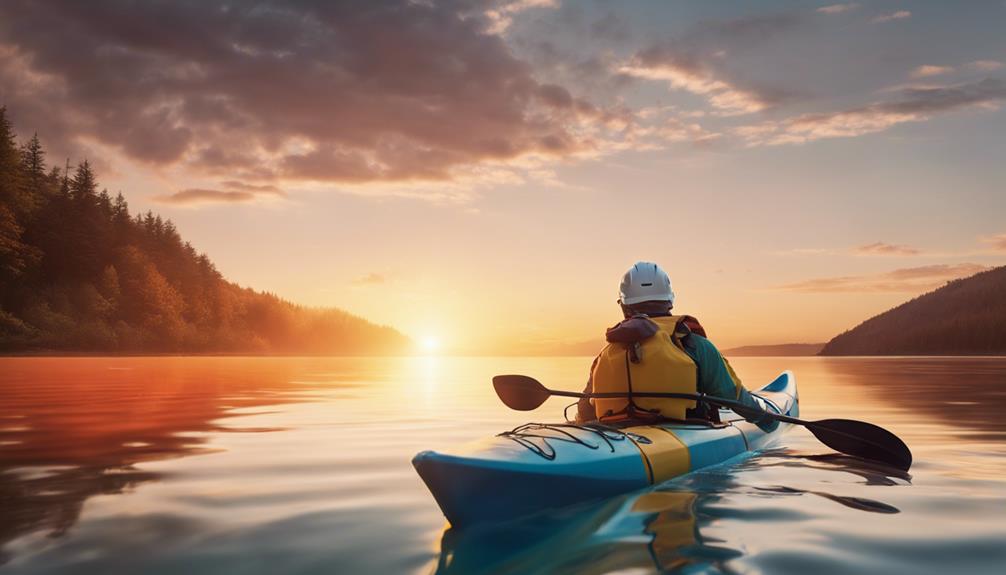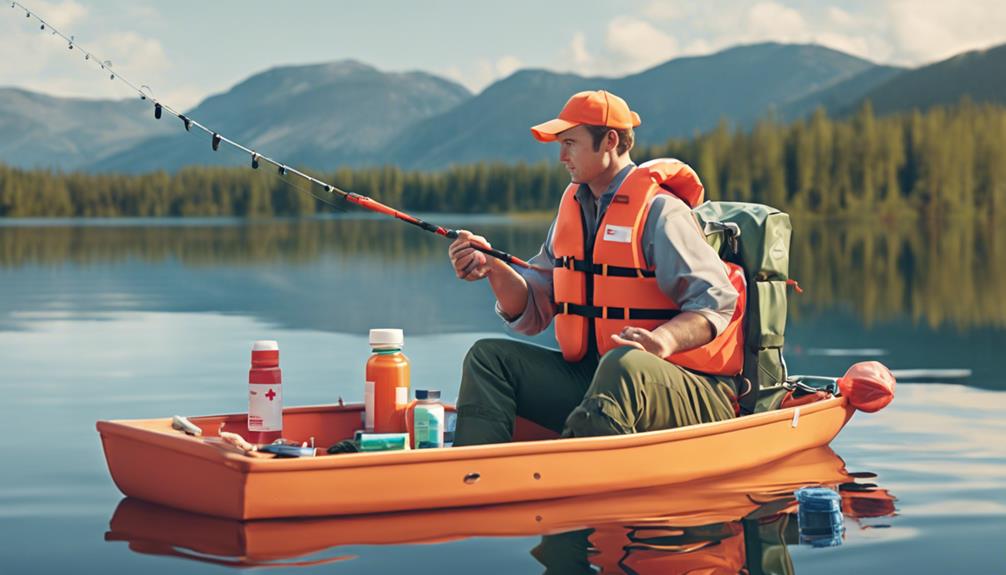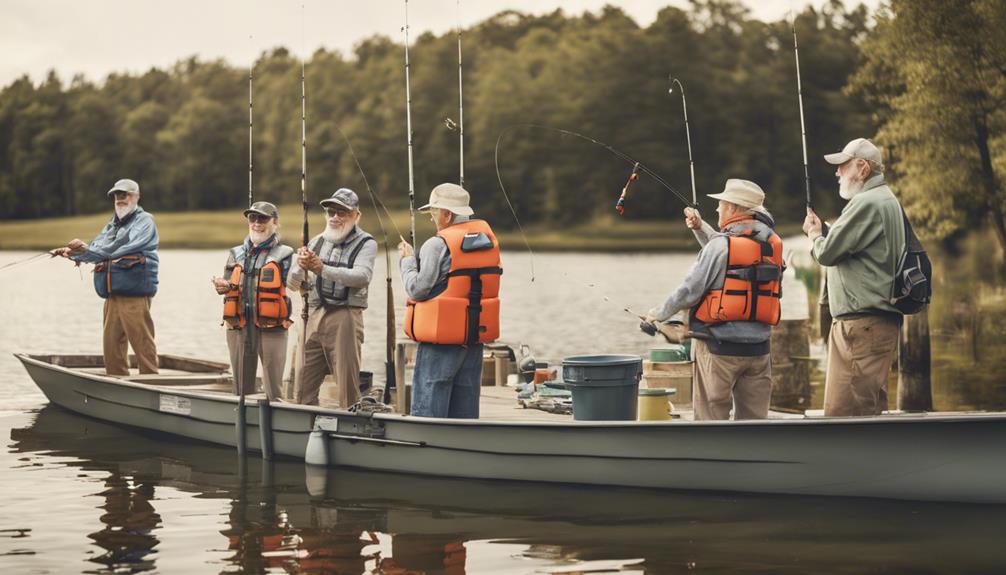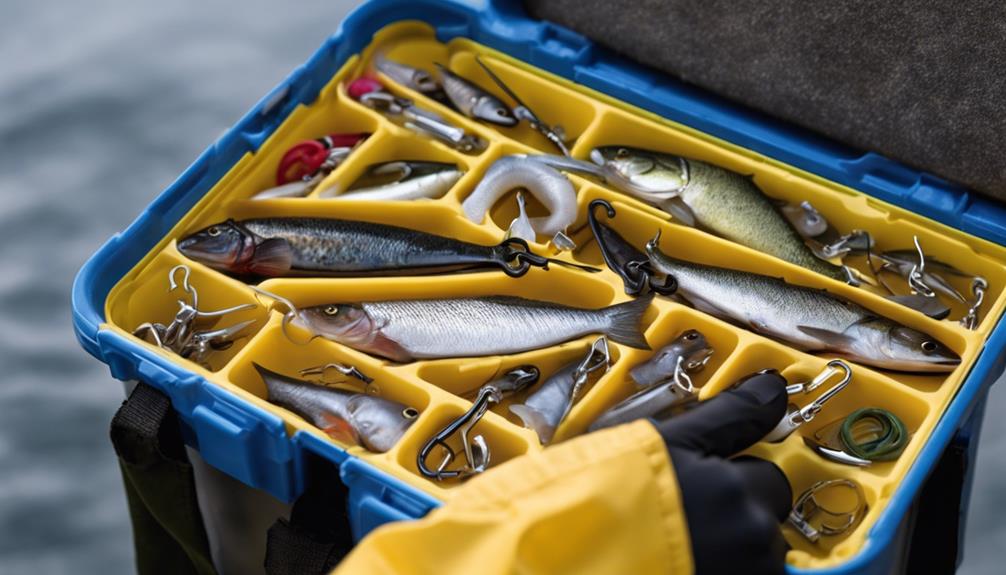Did you know that kayaking is considered one of the riskiest forms of recreational boating?
When you head out for a day of kayak fishing, you might not realize the potential dangers that come with it.
From unexpected weather changes to challenging water conditions, there are numerous factors that can turn a peaceful outing into a risky situation.
Understanding why safety precautions are crucial in kayak fishing can make all the difference in ensuring a safe and enjoyable experience on the water.
Importance of Safety in Kayak Fishing
Ensuring your safety while kayak fishing is essential for a successful and enjoyable experience on the water. Before embarking on any kayak fishing adventure, conducting a thorough risk assessment is crucial. By evaluating factors such as weather conditions, water currents, and your own skill level, you can better anticipate potential hazards and prepare accordingly.
Implementing safety protocols is another key aspect of staying safe while kayak fishing. Always wear a properly fitted personal flotation device (PFD) to ensure buoyancy in case of an accidental capsize. Additionally, familiarize yourself with basic rescue techniques and how to re-enter your kayak from the water. These skills can be lifesaving in emergency situations.
When out on the water, it's important to constantly reassess your surroundings and adjust your plans accordingly. Keep a close eye on changing weather patterns and be prepared to head back to shore if conditions worsen. Inform someone reliable about your planned route and expected return time, so they can raise the alarm if you don't check-in as scheduled.
Proper Gear and Equipment
To enhance your safety and preparedness while kayak fishing, having the proper gear and equipment is crucial. Regular gear maintenance and safety checks are essential to ensure everything is in working order before heading out onto the water. Inspect your kayak for any damages, make sure your paddle is sturdy, and check that your personal flotation device fits properly. By conducting these safety checks, you can minimize the risk of accidents or malfunctions while out on the water.
In addition to maintaining your gear, proper equipment storage and organization play a key role in enhancing safety. Storing your gear in a secure and easily accessible manner can save precious time in case of emergencies. Ensure that all your equipment is properly secured to your kayak to prevent anything from falling overboard. Organizing your gear in a logical manner can also help you locate items quickly when needed, especially in challenging situations.
Weather Awareness and Planning
Stay informed about the weather conditions before embarking on your kayak fishing trip to ensure a safe and enjoyable experience. Weather awareness and planning are crucial aspects of trip preparation and risk assessment. Here's what you need to consider:
- Trip Preparation:
Check the weather forecast before heading out. Be aware of any potential storms or strong winds that could impact your trip. Always have a backup plan in case the weather changes unexpectedly.
- Route Selection:
Take into account the weather conditions when deciding on your route. Strong winds or high waves can make certain areas more dangerous to navigate. Plan your route accordingly to avoid risky situations.
- Tide Prediction:
Understand how the weather can affect the tides in the area where you plan to fish. High winds can cause higher tides, strong currents, or rough waters. Keep in mind the tide prediction to ensure a smoother and safer fishing experience.
Understanding Water Conditions
When preparing for your kayak fishing trip, understanding water conditions is essential for ensuring your safety and success on the water. Water currents and wave patterns play a crucial role in how you navigate and fish effectively.
Water currents can significantly impact your kayak fishing experience. Before heading out, research the tidal movements and currents of the area you plan to fish in. Strong currents can make paddling more challenging, affect your ability to stay in one spot, and even cause your kayak to capsize if not approached carefully. Understanding how currents behave in different parts of the water body you're fishing in will help you plan your route and ensure a smoother fishing trip.
Wave patterns are another important aspect of water conditions to consider. Waves can be influenced by factors such as wind speed, direction, and the geography of the area. In open water, larger waves can make paddling difficult and affect your stability. It's crucial to be aware of the wave patterns in your fishing location to anticipate any rough waters and adjust your fishing techniques accordingly.
Emergency Preparedness
In case of emergencies while kayak fishing, having a well-equipped safety kit is essential for your preparedness. Being out on the water means being prepared for any unforeseen situations that may arise. Here are three crucial items to include in your emergency kit:
- First Aid: A basic first aid kit should contain items like bandages, antiseptic wipes, gauze pads, adhesive tape, and pain relievers. In the event of minor cuts, scrapes, or burns while kayak fishing, having these supplies readily available can make a significant difference in how you manage the situation.
- Survival Skills: It's essential to equip yourself with basic survival skills in case of emergencies. Knowing how to start a fire, signal for help, and build a makeshift shelter can be invaluable if you find yourself in a challenging situation while kayak fishing.
- Emergency Communication Device: Carrying a waterproof communication device, such as a VHF radio or a personal locator beacon, is crucial for calling for help in emergencies. These devices can help you reach out to authorities or other nearby boaters if you run into trouble on the water.
Being proactive about emergency preparedness can make your kayak fishing trips safer and more enjoyable. Remember, it's better to have these items and not need them than to need them and not have them.
Navigation and Communication
Equipped with a reliable GPS system and effective communication devices, navigating the waters and staying connected with fellow kayakers is crucial for a safe and enjoyable fishing experience. Before embarking on your kayak fishing trip, ensure you have a GPS navigation system to help you plot your route and track your location. By utilizing GPS technology, you can easily navigate through different water bodies, mark potential fishing spots, and safely return to shore. Additionally, having communication devices such as marine radios or personal locator beacons is essential for emergencies or staying in touch with other members of your group. These devices allow you to send out distress signals or communicate with rescue services in case of unexpected situations.
When planning your route, take into account factors like weather conditions, water currents, and potential hazards in the area. It's crucial to share your planned route with someone on land, so they can alert authorities if you fail to return as scheduled. Familiarize yourself with emergency signals and procedures in case you need assistance while out on the water. Remember, staying connected and informed through proper navigation and communication tools can make all the difference in ensuring a safe and successful kayak fishing adventure.
Physical Fitness and Health
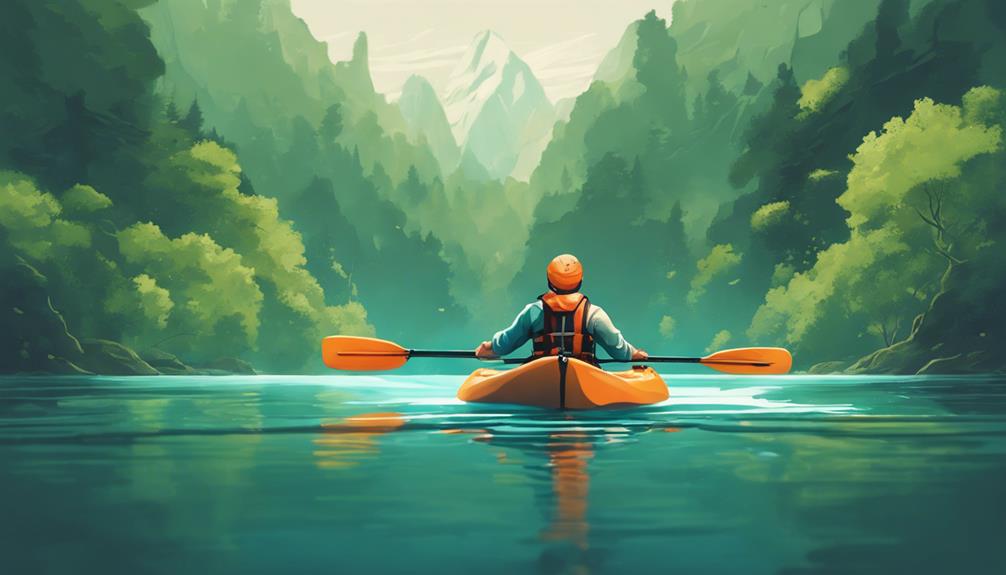
Are you prepared physically and mentally for the demands of kayak fishing? When hitting the waters for kayak fishing, your fitness and health play a crucial role in ensuring a safe and enjoyable experience. Here are some key points to consider:
- Nutrition Tips
- Stay hydrated by drinking plenty of water throughout your fishing trip.
- Pack nutritious snacks like fruits, nuts, and protein bars to keep your energy levels up.
- Avoid heavy and greasy meals before kayaking to prevent discomfort and sluggishness.
- Stretching Exercises
- Prior to setting out on your kayak, perform simple stretching exercises to warm up your muscles and prevent injuries.
- Focus on stretching your arms, shoulders, back, and legs to ensure flexibility while paddling.
- Incorporate a short stretching routine during breaks to keep your body limber and reduce stiffness.
Maintaining good physical fitness through proper nutrition and regular stretching can enhance your performance on the water and reduce the risk of strains or fatigue. By taking care of your body, you aren't only safeguarding yourself but also optimizing your overall kayak fishing experience.
Continuous Education and Training
Prepare yourself for kayak fishing by continuously expanding your knowledge and honing your skills through ongoing education and training opportunities. Skills development is crucial for ensuring your safety and success on the water. Engage in hands-on practice regularly to improve your paddling techniques, rescue skills, and navigation abilities. By participating in training sessions or workshops specifically designed for kayak fishing, you can learn new strategies and gain valuable insights from experienced instructors.
Additionally, make risk assessment and scenario planning part of your routine. Understanding potential hazards, such as changing weather conditions or rough waters, allows you to prepare effectively. Practice responding to different emergency situations, like capsizing or getting stranded, to build confidence in handling unexpected scenarios. Simulating challenging conditions in a controlled environment—like a pool or calm lake—can help you refine your reactions and decision-making skills.
Continuous education and training not only enhance your proficiency in kayak fishing but also contribute to a safer and more enjoyable experience overall. Stay updated on the latest safety protocols, equipment innovations, and rescue techniques to mitigate risks effectively. Remember, inevitably, the more you invest in improving your skills and knowledge, the more prepared you'll be to successfully navigate through any kayaking adventure.
Frequently Asked Questions
How Do I Properly Store My Kayak Fishing Gear When Not in Use?
When not in use, properly store your kayak fishing gear by ensuring proper organization and gear maintenance. Keep your equipment clean and dry to prevent rust and damage.
Store your rods in a secure rod holder and your tackle in organized containers. Hang your PFD in a well-ventilated area to avoid mildew.
Regularly check your gear for any signs of wear and tear to ensure it's in good condition for your next fishing adventure.
Are There Any Specific Regulations or Permits Needed for Kayak Fishing in Certain Areas?
In some areas, kayak fishing may require permits and adherence to specific regulations. These rules help manage the impact on the environment and support conservation efforts.
Before heading out, make sure to check local guidelines regarding permit requirements and any restrictions in place. Respecting these regulations not only ensures your compliance with the law but also contributes to the preservation of the natural surroundings for future enjoyment.
What Are Some Common Mistakes to Avoid While Kayak Fishing for Safety Reasons?
When kayak fishing, some common mistakes to avoid for safety include not wearing a life jacket, neglecting to check weather conditions, and not bringing essential safety gear like a whistle or a first aid kit.
To ensure your safety, always conduct a risk assessment before heading out, practice emergency preparedness by knowing how to self-rescue, and familiarize yourself with basic kayak safety tips to prevent accidents while on the water.
How Do I Assess My Own Skill Level and Know When I Am Ready for More Challenging Kayak Fishing Conditions?
Assess your skill level honestly before tackling more challenging kayak fishing conditions. Seek proper training to enhance your abilities. Follow safety guidelines to build experience gradually.
Are There Any Specific First Aid Techniques or Practices I Should Be Aware of for Kayak Fishing Emergencies?
In kayak fishing emergencies, knowing wilderness first aid and CPR can be crucial. Being prepared with these skills can make a significant difference in emergency response and rescue techniques.
Learning how to handle common injuries like cuts, burns, or hypothermia while out on the water is essential for your safety and the safety of others. Stay informed and practice these techniques regularly to be ready for any unforeseen situations that may arise.
Conclusion
In conclusion, safety precautions are essential for kayak fishing to ensure a fun and secure experience on the water. By having the proper gear, being aware of weather conditions, understanding water conditions, being prepared for emergencies, navigating effectively, staying in communication, and maintaining physical fitness, you can enjoy your time on the water with peace of mind.
Remember, safety always comes first when it comes to kayak fishing.
